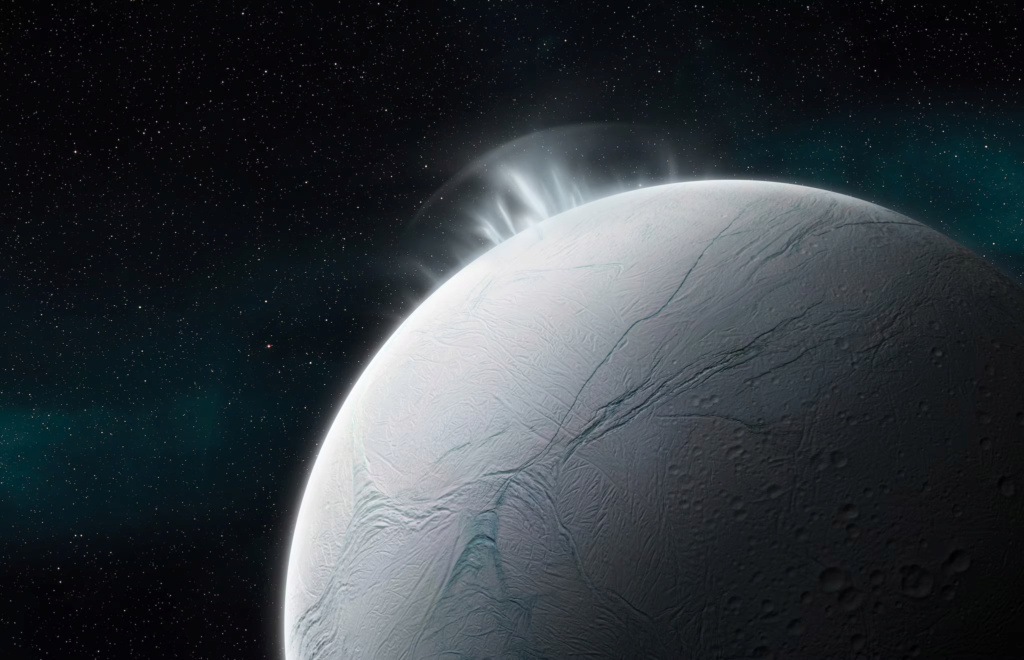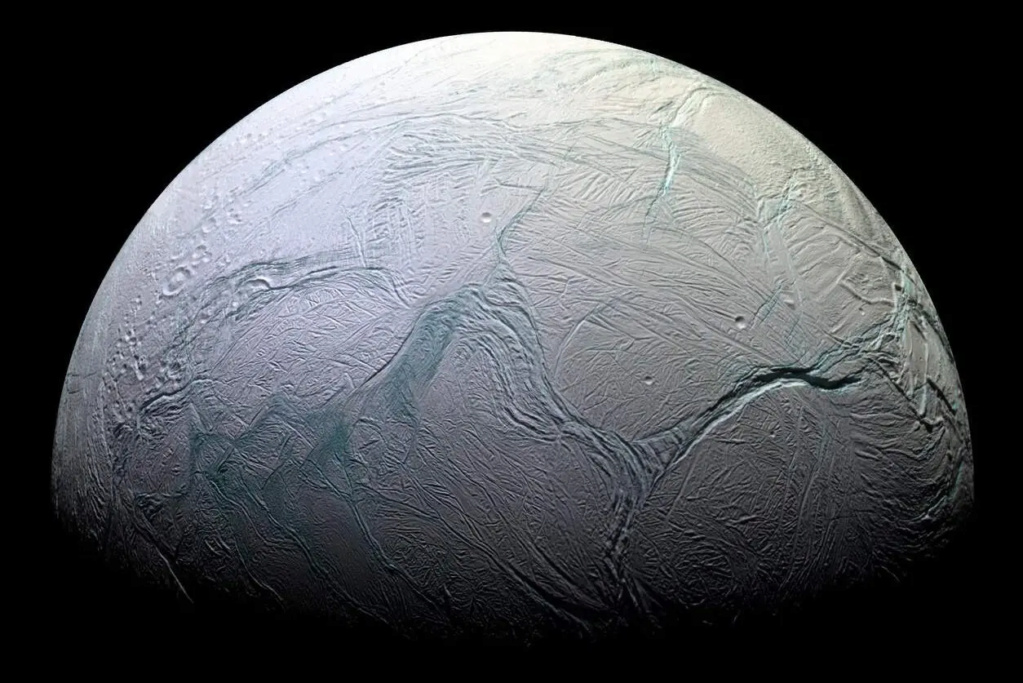On the surface of Enceladus, scientists discover "all components of life"

Scientists find phosphates on Enceladus. archival | Source: AFP\NASA
Scientists have discovered that the sixth largest moon of Saturn, which is known as the icy "Enceladus", contains "all the ingredients for life," according to a report published by the New York Times, citing a research paper published in the scientific journal Nature .
"Enceladus" is among the 146 moons surrounding Saturn, characterized by its liquid ocean and rocky floor, where scientists found within samples of ice grains "phosphate", which is the first time that they discover the presence of a chemical element outside the Earth's ocean.
These samples were collected by the Cassini spacecraft, which ended its joint mission between NASA and the European Space Agency in 2017.
And the scientists considered that their findings increase the possibility that "Enceladus may be home to extraterrestrial life."

Frank Postberg, a planetary scientist at the University of Berlin who supervised the paper, called this a "puzzling moment", noting that they had not expected to find "phosphate" in their findings.
Scientists explain that their finding of phosphate means that they have found all the elements necessary for life as we know it, as phosphorus is one of the main components of human bones and teeth, and it is "the rarest vital element in the universe."
Scientists previously found five other elements in "Enceladus", which are "carbon, hydrogen, nitrogen, oxygen and sulfur".
Previous research suggests that phosphorus must be "scarce" on oceanic worlds beyond Earth, which could hinder life from emerging anywhere outside the solar system or galaxy.

According to a report published by the Wall Street Journal, Enceladus has a diameter of about 300 miles, and columns explode from its south pole, causing ice particles to scatter hundreds of miles in its vicinity at a speed exceeding the speed of sound.
Source : websites

